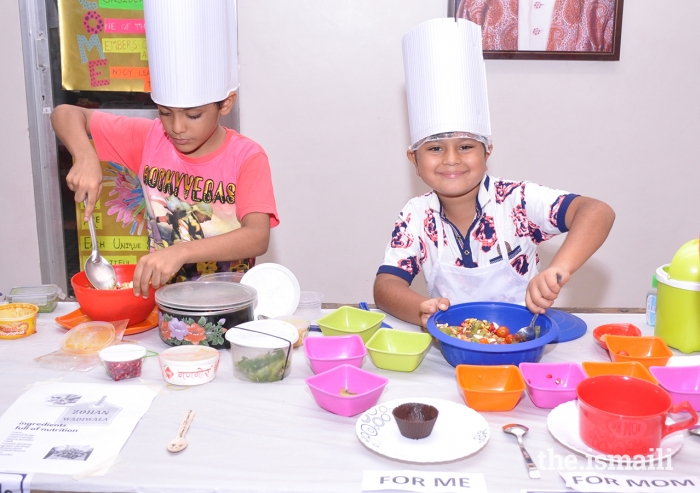 The fibre, complex carbohydrates and protein in pulses are a great combination for satisfying hunger and keeping you full, helping you to eat less overall and preventing your blood sugar from spiking too often. Licensed from CanStockPhoto
The fibre, complex carbohydrates and protein in pulses are a great combination for satisfying hunger and keeping you full, helping you to eat less overall and preventing your blood sugar from spiking too often. Licensed from CanStockPhotoType 2 diabetes is the most common type of diabetes and usually occurs in people over 40. However, in recent years a growing number of younger adults and even children – especially those from South Asian backgrounds – have developed diabetes earlier as a result of inactivity and being overweight.
Luckily the body sends early warning signals. Before a person gets diabetes, they usually go through a stage called pre-diabetes. At this stage, they are often overweight, and have high blood glucose (sugar), but it isn't high enough to be considered diabetes.
There are no clear symptoms of pre-diabetes, but sometimes people will complain of increased amounts of urine, increased thirst, especially for sugary drinks, or feeling tired or sluggish after meals. These symptoms are often mild and come on gradually, so you may not notice there is something wrong. Having a parent or sibling with diabetes also increases one's risk of becoming diabetic.
Pulse ready-to-go tips
- Once or twice a week, soak (as needed) and cook lentils, beans or chickpeas. Refrigerate or freeze 250 to 500 millilitres (1–2 cups) or more in containers or bags, whichever size is best for your family meals.
- Give your pulses some pressure – by pressure cooking that is!
- When using canned pulses with salt, drain and rinse to lower the sodium content by 40 per cent.
Pulse-rich recipes
A doctor can test and confirm when the body's blood glucose levels rise above normal for long periods of time. Approximately half of those with pre-diabetes develop diabetes within 10 years. Once diagnosed with the disease, the risk of many other complications increase, including heart attack, stroke, kidney disease, blindness, and foot ulcers and infections that could lead to limb amputations.
Clearly, it is well worth doing everything you can to avoid developing diabetes. Studies show that over 50 per cent of those with pre-diabetes who eat healthier and are more active can delay or even prevent the progression. What's even more exciting is that for many, by losing just 10 per cent of their body weight, there can be a significant impact on quality of life and a decrease in the chances of developing the disease.
Exercise can help, in the form of a 10–15 minute brisk walk after every meal, as this will help your body's blood circulation. Also, fix some of your eating habits by going back to basic foods such as vegetables and pulses.
A great addition to a healthy diet, “pulse” describes the mature edible seeds of legume plants. These include beans, chana, and dahls such as toor, urad, and more. The names, varieties, and forms of pulses are as endless as the health benefits.
Pulses are higher in fibre than most other food found in nature. For example, 125 millilitres (1/2 cup) of cooked pulses have 3 to 6 grams of fibre. Pulses also have about twice as much protein as cereal grains such as wheat or rice. They are good sources of many vitamins and minerals such as iron, potassium, magnesium, zinc and folate.
The fibre and other complex carbohydrates in pulses are believed to be the main reason that they can help manage non-communicable diseases, such as diabetes. Research suggests that people who have type 2 diabetes and who eat 125 millilitres (1/2 cup) of cooked pulses per day as part of a high-fibre diet will have better long term blood sugar control. Pulses may help you feel full for longer with fewer cravings for snacks between meals, so you may eat less overall and, as a result, lose some weight.
All family members can benefit from including pulses in their diet, not just those with pre-diabetes, so don't worry about making separate meals. South Asian cooking has a rich tradition of including a diverse range of grains, vegetables, fruit and pulses. Celebrate your heritage with healthy pulse choices such as dhal, curries, and dhokri. If family preferences are becoming more westernised, consider incorporating special days of the week dedicated to pulse meals such as moong Mondays or chana saag Sundays.
Adding more pulses to your diet, along with regular brisk walks may help you not only lose some weight, but also keep diabetes away.
References and resources
- Sievenpiper, J.L. et al. “Effect of Non-oil-seed Pulses on Glycaemic Control: A Systematic Review and Meta-analysis of Randomised Controlled Experimental Trials in People with and without Diabetes”, Diabetologia 52.8 (2009), pp: 1479-495
- McCrory, Megan A. et al. “Pulse Consumption, Satiety, and Weight Management”, Advances in Nutrition 1 (2010), pp: 17-30.
- Pulses and Diabetes Control : Pulse Canada [PDF]







